At T-Square Company, we’ve spent more than 30 years helping families create homes that are safe, comfortable, and built for every stage of life. Now, our President and Owner, David L. Traut, has brought that same experience and passion to the page in his book: Age in Place at Home: Adapting the Home Environment for All Generations.
Why This Book Matters
The concept of “aging in place” is simple but powerful: with the right planning and design, people can continue living independently in the homes they love, even as their needs change. For many, staying home means holding on to dignity, comfort, and treasured memories.
Drawing on his decades of work as a builder and CAPS-certified professional, David wrote Age in Place at Home to be more than just a construction guide. It’s a roadmap for homeowners, families, caregivers, and professionals who want practical solutions and peace of mind.
What You’ll Learn Inside
-
Home Modifications That Matter Most — from safe bathrooms to wider doorways, grab bars, and better lighting.
-
Universal Design Principles — creating beautiful spaces that work for everyone, not just those with special needs.
-
Fall Prevention & Safety Tips — simple adjustments that make a big difference in daily life.
-
Planning for the Future — how to think ahead so your home adapts gracefully as life changes.
-
Resources & Guidance — including checklists, questions to ask contractors, and financial assistance options.
Who Should Read It
-
Homeowners who want to prepare their house for the future.
-
Families caring for aging loved ones.
-
Builders, designers, and architects interested in Universal Design.
-
Anyone who believes that home should always be a place of safety, dignity, and belonging.
Where to Find the Book
Age in Place at Home is now available on Amazon in both paperback and Kindle editions.
👉 Click here to view the book on Amazon

Final Thoughts
This book is more than a professional resource — it’s a personal mission. As David often says, “Home isn’t just where you live. It’s where you belong.”
At T-Square Company, we’re proud to bring that philosophy to life every day — and now, through Age in Place at Home, we’re excited to share it with readers everywhere.
Tags:
barrier free access,
aging in place home modifications,
wheelchair accessible baths and kitchens,
CAPS certified remodeling in Austin,
aging in place designs,
CAPS professional in Austin,
home modifications for independent living,
disability home modifications in Austin,
home modifications for independent living Austin,
universal design ideas,
age in place home design,
home modifications for disabled children,
universal design building for a lifetime,
special needs contractor in Austin,
senior home modifications in Austin,
handicap accessible home modifications,
accessibility home modifications,
accessible home modifications,
special needs contractor,
Austin home accessibility solutions,
ADA Accessibility,
CAPS-certified remodeling in Dripping Springs,
dripping springs handicap bathroom contractor,
home accessibility help,
what is a forever home?,
multigenerational homes,
home accessibility modifications,
how to age in place book,
safe bathroom design for seniors,
planners home edit,
how to age in place
Are You And Your Family Prepared For The Future?
The sudden onset of a disability can significantly impact a family's daily lifestyle in various ways:
- Changes in caregiving responsibilities: Family members may need to take on caregiving roles to support the disabled individual, which can require time and adjustments to daily routines.
- Financial considerations: The cost of medical expenses, assistive devices, and home modifications can strain a family's finances.
- Mobility and transportation: Depending on the disability, transportation options may need to be adapted, which can affect school, work, and social activities.
- Home modifications: The need for wheelchair ramps, accessible bathrooms, and other modifications may be necessary, impacting the home environment.
- Emotional and psychological impact: Family members may experience stress, emotional strain, or guilt as they adapt to the new circumstances.
- Social life: The family's ability to participate in social events and outings may change due to the disabled family member's needs.
- Education and employment: Family members may need to adjust their work or school schedules to accommodate caregiving responsibilities.
- Healthcare management: Coordinating medical appointments, therapies, and medications becomes a part of the daily routine.
- Community support: Families may seek support from local disability organizations or support groups to help navigate these changes.
- Recreation and leisure: Finding accessible recreational activities can be a challenge, impacting the family's leisure time.
It is essential for families, prior to facing such life challenges, to take proactive measures toward universally preparing their inaccessible home for future evolving personal needs. Therefore, all periodic home remodels should include elements of Universal Design in every area of your home. This positive action will alleviate or lessen the affects of many of the sudden impactful changes brought about in the aforementioned list. The family should also communicate openly, seek external support, and work together to adapt to the new lifestyle and ensure the well-being of all members.
The constantly evolving concept known as Universal Design for home building and remodeling is catching on nationwide and has been for several years as a sign of the times. Universal design in housing refers to the concept of designing living spaces and homes to be accessible and usable by people of all ages, abilities, and backgrounds. The goal is to create environments that accommodate a wide range of individual needs and preferences without the need for costly or specialized modifications. Universal Design techniques used in building or remodeling makes a home more accessible to all regardless of their mobility or adaptive abilities and at any age.
An evolution of new products used for disability home modifications is making Universal Design homes more accessible and has finally come about in the remodeling industry. These new advances in accessible home remodeling not only keep the living environments safer but will not compromise the home's aesthetics or resale value. Furthermore, this new way of thinking offers flexibility to add accessories now and later to those planning ahead or to the end user. It also provides for a wide range of human performance characteristics for the way people use spaces within their homes including well integrated usability features.
There are seven criteria which must be met to be considered a Universal Design no matter which area of the home you are referring to. Any design must be equally useful to everyone, have flexibility in usefulness, be simple and intuitive, be perceived by everyone, have a tolerance for error, require little physical effort, and it must maintain an adequate area for approach and use. Any complexity or discriminating attribute to a design will doom it in terms of being considered universal in nature.
Universal Design Is Inclusive Design For All!
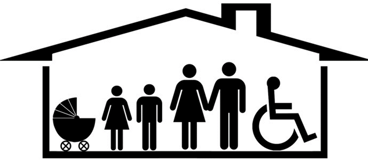
Universal design aims to create inclusive living environments that promote independence and quality of life for everyone, including individuals with disabilities, older adults, and families with young children. It's an important concept for promoting accessibility and social inclusion in housing design.
While Universal Design is a human centered concept making up an overlapping design philosophy, this concept of design came about by the recent disability movement of our aging population and the quality of life created by an increased user concept. An evolution in building ideas which deals with a larger all-inclusive society rather than a select group will make our homes more livable and sustainable in the future. Small changes can make a great difference with practice and understanding of the antiquated architecture which has evolved as the norm. It has been demonstrated that a need for functionality and usability has been lacking within our existing home inventory and the standards and codes from our municipalities must catch up with the needs of our society as a whole. When everyone can benefit it just makes common sense. Observing other aging groups in our society and the personal perils they face has finally brought about a new way of thinking about the living environment. Universal Design is beneficial to all abilities and ages offering practical solutions for specific differences in people. We have long needed a new vision representing a home that works for everyone and this attitude is becoming the new reality stemming from a revolution. This new building revolution, using Universal Design, is helping to create new accessible homes along with ways to make the older homes more accessible.

Universal Design does not equate to accessibility design even though they both are concerned with ergonomics and human function issues. The ADA guidelines for accessibility were created as a means to help those people with extreme disabilities within our society who are a narrow and specific cross section of the masses. A Universal Design approach proactively takes into account moderate impairments or disabilities, temporary health conditions, and the varying abilities of anyone within a home regardless of their age or size. In other words, an ADA accessible home is designed for the one person exhibiting a disability, whereas a Universal Design home is designed for everyone and avoids kneejerk reactions to later seen health issues. Features like one story design, bedrooms and bathrooms on the ground floor, natural day lighting through larger windows and skylights, and wider doors and hallways appeal to users of all ages. With baby boomers eyeing a future where they'll Age in Place and younger people renovating older homes, the Harvard Joint Center for Housing Studies is anticipating healthy growth for the U.S. home improvement market through 2025.
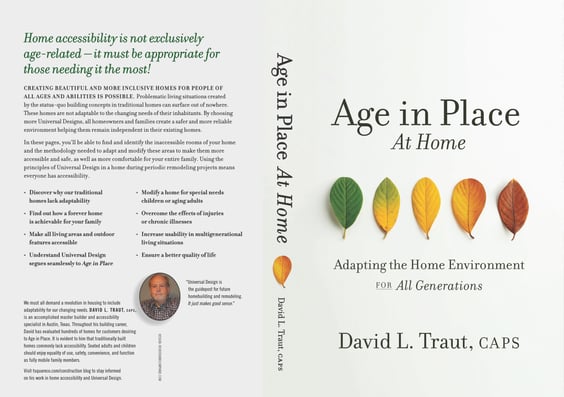
T-Square Company in Austin, Texas has been offering design/build accessibility projects to their clients incorporating the principles of Universal Design for over twenty-five years. We specialize in Universal Design Ideas. David L. Traut, CAPS, the owner-president of T-Square Company is certified in Universal Design. He has published a book entitled "Age in Place at Home :Adapting the Home Environment for All Generations" which is available through Amazon. The book covers identifying and overcoming common accessibility shortcomings within a traditional home. Within it's pages, David takes you through a home interior showing you how and where to apply Universal Design aspects in every room. Since Universal Design seamlessly segues into Aging in Place needs, it is a how-to book worth reading. Incorporating Universal Design principles into your home facilitate future Aging in Place goals, while comfortably addressing the diverse needs of all ages and mobility levels living within your home at any time. This book is a great reference for aging homeowners, parents of special needs children, homeowners moving in their elderly parents, and multi-generational living situations. Always remember, home accessibility is not exclusively age-related, but it must be appropriate for those needing it the most.

Tags:
aging in place remodeling,
wheelchair accessible remodeling,
CAPS certification holder in Austin,
aging in place design,,
accessibility designs Austin Texas,
universal design/build ideas,
Austin Accessibility Design,
Austin accessible home remodeling,
aging in place specialist in Austin,
age in place home design,
why is aging in place important,
universal designbuilding for the future,
why is universal design important,
7 principles of universal design,
Austin disability contractors for special needs,
Austin aging in place specialist,
accessible homes,
universal design/build contractor,
wheelchair accessible housing,
accessible home builder in Austin,
universal home design in Austin,
Austin home accessibility solutions,
Austin home modification services,
Dripping Springs aging in place specialist,
Universal design construction,
Universal Design for Disabilities
Honestly, accessible homes are needed by all of us at some time in our lives. This is true whether it's for ourselves, an elderly family member, or a physically-challenged guest. The need is certainly not driven by age, but is a result of life's experience. For example, a child or young adult who has sustained a cervical spine injury will benefit from precise home modifications to increase their independence much like an elderly person. Any family living with disability among any of it's generations within it's group can always benefit from additional accessibility. This will in turn increase safety and independence for all family members involved as they go through life.
Each physically-challenged child or aging individual having similar impairments describes his or her limitations differently. The blind don't experience their world the same as a person with deafness. Some of our societal statistics that weigh into aging in place situations include reports stating that 19% of the population between the ages of 16 and 64 and 42% of those of us 65 and over have a physical disability affecting the activities of their daily lives. For an adult's progressive condition, elderly home design in Austin and aging in place home remodeling definitely comes into play. Elder construction and remodeling is the only way to insure the safety, mobility and independence of the homeowner or family member requiring the home modifications.
The two main groups driving this aging in place market are those people who are 65 and over and the baby boomers. The first group is projected to reach 55 million in 2020. The baby boomer generation born between 1946 and 1965 today make up 28% of the U.S. population and are made up of some 77 million people. Bathroom modifications for the disabled in existing homes is important because people of age 50 and older want to remain in their current home for as long as possible requiring elder living solutions.
The National Association of Home Builders, in partnership with the AARP and Home Innovation Research Labs, created the CAPS program, which includes training and education on the technical, business management and customer service skills essential to compete in the fastest growing segment of the residential remodeling industry--home modifications for Aging in Place. Elderly home design in Austin should only be done by an experienced CAPS certified remodeling company like T-Square Company, providing a full compliment of Aging in Place services. These services include assessment of the home, specifications and designs to modify the home for increased accessibility per the client, city permitting when required, and carrying out the renovations turn-key. T-Square Company, CAPS #1636580, has over twenty-seven years of home accessibility experience. All registered CAPS program graduates and their remodeling company will be listed in a national registry in Washington. The information can be found by simply visiting nahb.org/CAPS.

Handicap Accessible Showers
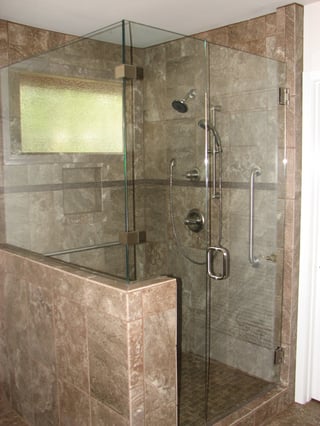

Physical limitations affect many more people than the daily users of walkers and wheelchairs. Many members of our life experienced or elder society have significant problems in dealing with their home environment. Today's conventional building standards conflict with most people's accessibility when you consider our created architectural barriers concerning cabinetry and door opening widths, individual strength, range of motion, movement, manual dexterity, balance, and coordination. Once the demands of our built environment exceed their capacities we become excluded from a room or even the entire home. The building world must work in unison to be sure the entire living environment meets basic needs in addition to affordability and structural integrity for the consumer and home owner. This includes both the home and the components within the home being accessible to all inhabitants. Privacy, sense of belonging, sense of control, and the sense of safety and security make up the quality of life for any home and should be considered for any design.

The Aging in Place market in the US today is constantly being influenced by the increasing size of the aging population, the market desire to remain in one's home, a constantly increasing cultural diversity, and our aging housing stock associated with it's reduced affordability. Our elderly population is really made up of two prominent age groups formed by the age 65 and over population and the baby boomers who were born between 1946 and 1965. Together these two groups own over 48% of all the US home inventory today. The desire to remain in one's home is driven by social attachments via a network of neighbors, friends, and family. Our cultural diversity assures that the same Aging in Place solutions cannot work across the board for all individuals just as an individual's ability to live independently varies from person to person. With constantly aging housing, costs can be a major barrier in home modification for many residents. A catch 22 situation can arise when you consider the reduced affordability of another home versus the one that is presently occupied. In this case the homeowner must use the equity that has accrued in their home's value in order to make the modifications required. You will find out in the long run that it's cheaper to remodel your existing home using your accrued assets than it is to buy a new home in today's market and move.

There are really three categories of Aging in Place customers. Those who are simply and wisely planning ahead for their futures to remain in their present homes. The second category concerns those people who know they have a chronic medical disorder and need to prepare in advance for accessibility issues which will come as a result of their disease. People with diseases that are constantly causing increased physical or mental changes to their being are a good representative of this second group. The third group involves those people who either have had a chronic problem that has progressed severely altering their mobility or those who have sustained a life altering tragedy such as being involved in an accident. All of these groups will drive the future metamorphosis of existing inaccessible dwellings.

Some people confuse the terms Aging in Place with Universal Design. Both are a method to increase accessibility within the home but Aging in Place strictly deals with an existing home. Aging in Place also implies modifying any home for it's older occupants to insure that the inhabitants can safely remain in the home for as long as they possibly can. This time will expire once they need assisting medically trained help for safeguarding their personal safety in a nursing home or an assisted living environment. Universal Design is just that; offering choices to all of a home's residents no matter their age or physical capabilities. It begins with a design and then the construction begins. Items like wide-open rooms containing a sixty-inch by sixty-inch area for turning, unobstructed corridors at least 40-inches wide, adequate lighting throughout the home, having adaptable kitchen work areas, the use of contrasting colors in all rooms, a shower seat to increase safety, raised electrical outlets positioned at 18-inches above the floor, reinforced bathroom walls to allow for installing grab bars when required, easy-to-reach storage with greater organization, and non-slip flooring are major concerns within any elderly house design. However, the number one safety hazard to consider during an elderly home design is negotiating level changes within the home--steps at the entry, stairs between floors, and curbs to step over when entering the bath or shower. Eliminating level changes is very difficult in existing homes and almost impossible to do aesthetically and without major compromises, unless there is a major renovation. The result is that most homeowners decide to sell the house rather than make the modifications. When Universal Design is periodically incorporated into their design, homes can accommodate the needs of their owners longer as those needs evolve over time.
David L. Traut, CAPS owner of T-Square Company in Austin, Texas is one of the select group of professionals nationwide to earn the Certified Aging-In-Place Specialist (CAPS) designation, identifying him as a home remodeler and builder with the skills and knowledge necessary to remodel or modify a home to meet the unique needs of the older population, disabled owners or their visitors.
After over a year of writing to fulfill his customers' requests, David's new book, "Age in Place At Home: Adapting the Home Environment for All Generations" , is available for purchase from Amazon. Please go to the link below to order his paperback book, which was released in late December, 2022. It provides a great guideline for using the principles of Universal Design in new home construction and/or remodeling for every room in your home. Get your copy today.
https://www.amazon.com/gp/r.html?C=2Z24ENUUAEWUK&K=13Y7YU7PKKYAC&M=urn:rtn:msg:20221010201802eb9acb7b24004a4785cd2ec1d4f0p0na&R=3R6MK9WDXJPH7&T=C&U=http%3A%2F%2Fwww.amazon.com%2Fdp%2FB0BHTV28RV%3Fref_%3Dpe_3052080_276849420&H=7FWEPMGCH0TT8LN6SKPMUOCVJNYA&ref_=pe_3052080_276849420
David's book acts as a guidepost for perplexed homeowners and caretakers trying to determine their family's next immediate direction and imminent future. The first half of the book explains why homes have always been inaccessible, except on the day they were purchased. The second half takes you room by room through the home as I explain how applying the principles of Universal Design for Aging in Place makes the home comfortable and accessible for the largest number of people.
For additional information about the CAPS program, visit nahb.org/CAPS. For more information about T-Square Company, visit www.tsquareco.com or call 512-444-0097.

Tags:
barrier free access,
aging in place home modifications,
handicap home modifications,
aging in place construction,
aging in place designs,
CAPS certification holder in Austin,
CAPS remodeling techniques,
Universal Design,,
aging in place specialist,
aging in place services,
elder construction,
independent living in Austin Texas,
Austin elder construction,
handicap accessibility,
bathroom modifications for disabled,
accessibility remodelers in Austin,
roll in showers,
handicap bathrooms,
home modifications for independent living Austin,
universal design ideas,
Austin Accessibility Design,
Austin senior living solutions,
age in place home design,
Austin disability contractors for special needs,
accessible design,
accessible homes in austin,
barrier free home design,
Disability Remodeling Services in Austin, Texas,
CAPS-certified remodeling in Dripping Springs,
Dripping Springs senior home remodeling,
Universal Design for Disabilities,
aging in place services for seniors in Austin,
Barrier-free designs,
forever home,
elderly home designs
The biggest and most important challenge for any homeowner wanting to increase home accessibility using Universal Design to Age in Place is qualifying a chosen builder or remodeler. Consumers must verify the tradesman or professional has both the experience and knowledge for understanding any requirements used to increase the client’s safety and accessibility within the home. This is the only variable a homeowner controls in the building process. You are about to give a complete stranger your trust in a very serious matter of which you most likely know little about beyond articles read on the internet or hearsay. All professionals selected must be knowledgeable and experienced concerning Universal Design projects. The relevant personnel having job input concerning the client consist of architects, designers, builders, remodelers, and any therapists or extended healthcare workers who are involved with any household occupant requiring home modifications. I have witnessed clients who are completely overwhelmed and frustrated when interviewing several groups of building professionals including subcontractors with overlapping scopes of work. They become confused by the large amount of information gathered. Be advised that too many cooks in the kitchen can spoil a successful job outcome. CAPS certified accessibility specialists are trained to be better capable of helping with both the design and construction phases of the project. Most CAPS members have had coursework in Universal Design. However, you would not choose a recent law graduate over an experienced defense attorney to represent you in a serious matter. Even though both people have law degrees, there is only one path to choose. The remodeling business is no exception. All CAPS certified professionals are not equal. Some come from different professional backgrounds other than construction while others have not used their acquired knowledge long enough to make a difference. Ask about their experience and how long they have practiced Aging in Place remodeling. A well-seasoned contractor has seen what issues frequently come up in making improvements for Aging in Place and knows which methods he or she has used to overcome certain problematic areas of the home.
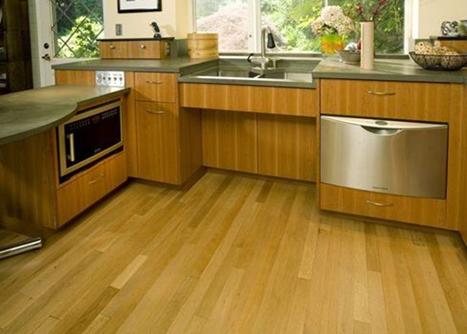
The aging societal changes and inventory of inaccessible existing houses created the need for a CAPS certification program. This designation program, offered through the National Association of Home Builders, NAHB, in collaboration with The American Association of Retired Persons or AARP, incorporates components of assessment, technical knowledge and management skills related to home modifications used to help people stay at home safely and independently for a longer period of time. The program was developed in 2001. The CAPS program connects responsible professionals with home owners needing specialized accessibility services on an ever increasing basis. Ordinary homeowners with extraordinary challenges partner up with experienced CAPS professionals and their own families. Working as a team, the trained CAPS specialist along with any family caretakers or therapists is able to identify the day to day problems weighing on those with health limitations. Aging in Place services provided by a specialized remodeling contractor ensures all accessibility issues of the home are accomplished correctly. The CAPS credential is a nationwide initiative and many construction and design professionals are taking advantage of the helpful training across the nation. Always check his or her credentials to verify the remodeler holds an active CAPS certification and is familiar with Universal Design. All registered CAPS program graduates and remodeling companies are listed in a national registry in Washington DC. The information is found by calling 1-800-368-5242 or by simply visiting their website at: http:www.nahb.org/en/learn/designations/certified-aging-in-place-specialist.aspx.

Experienced CAPS certified remodelers have the knowledge, expertise and sensitivity to provide modifications for making a home safer, more accessible, and better suited to the client’s required needs. A professional CAPS certified builder or remodeler is able to correctly assess the costs associated with an accessible design and lead the homeowner in the right direction adhering to the available budget costs to accomplish the modifications needed. Home modifications, accessibility products, and barrier free design greatly promote the independence and functional ability of physically challenged and aging individuals. Designing around specific physical conditions for accessibility lessens the impact of arthritis, restricted mobility, or loss of vision by using combinations of products, concepts, and techniques available today. Keep in mind when hiring a Certified Aging in Place Specialist they offer a service rather than a product. Each CAPS member draws from a different knowledge base, and approaches each project in a distinct way.
T-Square Company in Austin, Texas, has been producing successful Aging in Place projects for over a decade. They are a CAPS certified remodeler and offering design/build Aging in Place projects using Universal Design features. Call 512-444-0097 to discuss your project today and learn how you can achieve better accessibility within your existing home.
Incidentally, David L. Traut, the President/owner of T-Square Company has recently published a book entitled "Age in Place at Home: Adapting the Home Environment for All Generations". It is available on Amazon and stands as a reference book for increasing home accessibility incorporating essential Universal Design features.

Tags:
aging in place remodeling,
aging in place home modifications,
handicap home modifications,
CAPS certified remodeling in Austin,
ADA compliance,
custom tub to shower conversions,
CAPS remodeling techniques,
Universal Design,,
aging in place services,
certified aging in place specialist,
accessibility designs Austin Texas,
home modifications for independent living Austin,
universal design ideas,
certified aging in place consultant in Austin,
age in place home design,
aging in place home remodeling,
7 principles of universal design,
Austin disability contractors for special needs,
Austin handicap bathroom contractor,
barrier free remodeling,
handicap accessible home modifications,
disability remodeling,
ADA compliant wheelchair accessible showers,
accessible bathroom remodel,
why universal design,
accessible homes in austin,
the basics of aging in place,
Austin home modification services,
Age in Place at Home,
Professional Disability Remodeling Contractor,
CAPS-certified remodeling in Dripping Springs,
Universal Design for Disabilities,
Barrier-free designs,
home accessibility help
How do you go about designing an Aging in Place bathroom? This is a common question weighing heavily on the minds of today's aging homeowners. Truly, Aging in Place is all about living independently for as long as possible within your existing home. It is also about being safe and healthy within your home which has had architectural barriers or dangerous areas removed using proven practical home modifications. Trained and certified CAPS professionals are working throughout the residential remodeling industry demonstrating how you can Age in Place with the greatest freedom of movement and maneuverability. Aging in place home design is a concept promoting independence and livability for all types of living environments no matter the age or level of abilities of the occupants. The principle is not entirely age related as recuperation periods from injuries or the progression of debilitating diseases like MS happen to anyone at any age.


Just imagine being an active 60-70 year old adult who is able to participate in a full array of activities. This person may continue to work well beyond retirement age, enjoy sports, and travel wherever he or she desires. Then imagine how this same person might react to recovering over a six to eight week period while recuperating from a hip or knee replacement. The inability to move from the bedroom to the bathroom or kitchen without the use of a cane, walker, or wheelchair can be psychologically devastating. Or imagine a person whose hands are now disfigured from the crippling effects of arthritis and they have lost the ability to grasp objects. Just turning on a sink faucet or opening drawers can seem insurmountable to a person with such disabilities. The homeowner has become a prisoner within their own realized inaccessible home in one way or another. This scenario can be avoided by proactive bathroom designs.
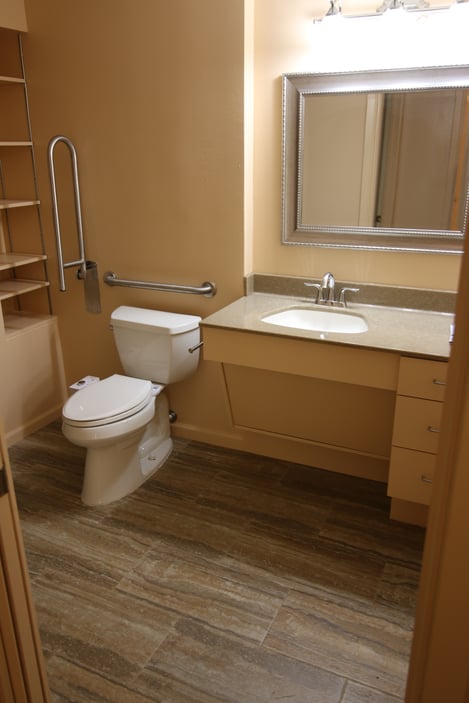

The physical challenges brought about by narrow hallways and doorways or high thresholds at the home's main entrance or shower area can create an impasse as they now have become physical barriers within the home. Not only has the ability to step over these barriers diminished but standing up from being seated on a low toilet seat has become almost impossible. Imagine the psychological impact of this limited environment on an individual who previously was accustomed to being fit, useful, and independent.
To accommodate the prospect of such physical challenges, dramatic changes to one's home may be necessary in order to Age in Place. Effective home adaptations and modifications can make any home safer and more manageable. Making important design decisions early in our lives can minimize the physical barriers and restrictions in one's home and secure access to the most essential areas like the kitchen and bathroom. This forethought will insure the dignity and independence for the homeowner in the event their mobility becomes restricted.
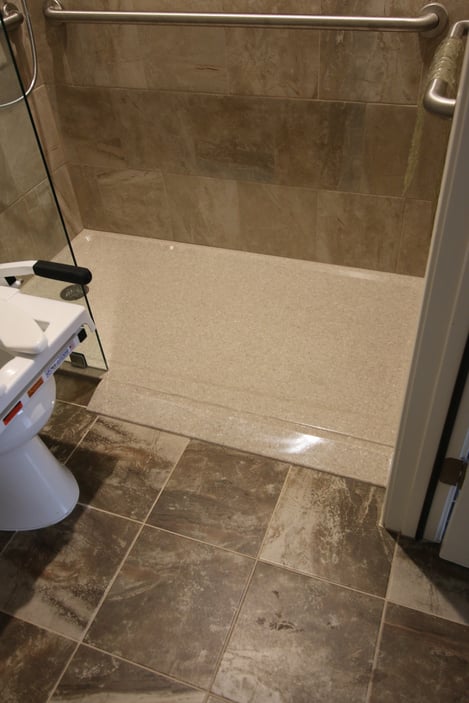
Universally, the Aging in Place bathroom is a little more spacious than in a traditional home with a five-foot turning radius observed. The new bathroom design is safer by reducing the potential for falls. In fact, there are many benefits to using Universal Design techniques, including potential use by aging family members, added resale value appealing to multiple generations, and the fact that you'll be creating a space that can be used by anyone who visits your home, regardless of their size or range of abilities. Bathrooms can be both functional and attractive when planned using elements of Universal Design like cabinetry that allows someone to sit at a barrier free bathroom sink. Either wrist handles or levers control all the faucets throughout the bathroom. Incorporate simple Universal Design updates for aging in place home modifications and handicap bathroom accessibility. Add secure ADA-compliant grab bars or handrails mounted on wooden blocking throughout the room around showers and accessible toilets, install adequate glare-free lighting in the shower and over work areas to prevent dark spots, perform a custom tub to shower conversion, add a seat within the curb-less roll in shower, provide recessed shelving within the shower to reduce floor clutter and tripping hazards, install a taller comfort-height toilet with a bidet attachment, lower upper cabinets and countertops or provide multiple layers for greater adaptability, add non-slip flooring, expand traffic ways, and widen entry doors. You might also consider lowering light switches and other electrical controls and installing easier to use door levers. Many considerations should be taken into account to provide safety and independence. You should try to provide a clear barrier free path or accessible route to this most visited area of your home as recommended by the ADA. Don't be afraid to spread the room out, because if the new design works well for wheelchairs, it works for everyone. Well planned accessible Aging in Place bathrooms lift the spirits and enhance dignity. They have the ability to transform our relationships with our bodies and our homes.

The National Association of Home Builders, in partnership with the AARP and Home Innovation Research Labs, created the CAPS program, which includes training and education on the technical, business management and customer service skills essential to compete in the fastest growing segment of the residential remodeling industry--home modifications for aging in place. David L. Traut, CAPS owner and President of T-Square Company in Austin, Texas as a handicap remodeling contractor is one of the select group of professionals nationwide to earn the Certified Aging-In-Place Specialist (CAPS) designation, identifying him as a home remodeler and builder with the skills, training, and knowledge necessary to design and remodel or modify a home to meet the unique needs of the older population, disabled owners, or their visitors.
By the way, David has recently published a book entitled "Age in Place at Home: Adapting the Home Environment for All Generations". It is available on Amazon and stands as a reference book for increasing home accessibility through Universal Design.
For additional information about the CAPS program, visit nahb.org/CAPS. For more information about T-Square Company, visit www.tsquareco.com or call 512-444-0097.
Tags:
ADA compliant kitchen cabinets,
aging in place home modifications,
aging in place home improvements in Austin,
aging in place construction,
accessibility home remodeling in Austin,
CAPS professional in Austin,
accessible home remodeling,
aging in place specialist,
aging in place services,
Austin elder construction,
bathroom accessibility remodels in Austin,
ADA bathroom Austin, Texas,
roll in showers,
roll in showers in Austin,
walk in shower designs Austin,
home modifications for independent living Austin,
disability access bathrooms Austin,
Austin Handicap Remodeling,
universal design ideas,
Austin accessible home remodeling,
certified aging in place consultant in Austin,
aging in place specialist in Austin,
aging in place design in Austin,
senior aging in place services,
age in place home design,
home accessibility help in Austin,
home access,
barrier free home design,
Age in Place at Home,
home modifications for aging in place,
barrier free bathroom layout
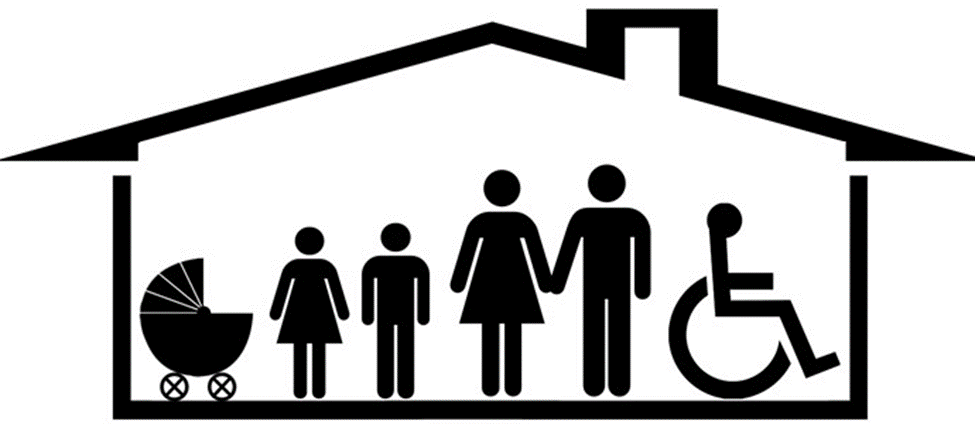
While Universal Design is a human centered concept making up an overlapping design philosophy, this concept of design came about by the recent disability movement of our aging population and the quality of life created by an increased user concept. An evolution in building ideas which deals with a larger all-inclusive society rather than a select group will make our homes more livable and sustainable in the future. Small changes can make a great difference with practice and understanding of the antiquated architecture which has evolved as the norm. It has been demonstrated that a need for functionality and usability has been lacking within our existing home inventory and the standards and codes from our municipalities must catch up with the needs of our society as a whole. When everyone can benefit it just makes common sense. Observing other aging groups in our society and the personal perils they face has finally brought about a new way of thinking about the living environment. Universal Design is beneficial to all abilities and ages offering practical solutions for specific differences in people. We have long needed a new vision representing a home that works for everyone and this attitude is becoming the new reality stemming from a revolution. This new building revolution, using Universal Design, is helping to create new accessible homes along with ways to make the older homes more accessible.
There are seven criteria which must be met to be considered a Universal Design no matter which area of the home you are referring to. Any design must be equally useful to everyone, have flexibility in usefulness, be simple and intuitive, be perceived by everyone, have a tolerance for error, require little physical effort, and it must maintain an adequate area for approach and use. Any complexity or discriminating attribute to a design will doom it in terms of being considered universal in nature.
The new (but old) evolving concept known as Universal Design for home building and remodeling is catching on nationwide and has been for several years as a sign of the times. Universal Design techniques used in building or remodeling makes a home more accessible to all regardless of their mobility or adaptive abilities and at any age. An evolution of new products used for disability home modifications is making those homes more accessible and has finally come about in the remodeling industry. These new advances in accessible home remodeling not only keep the living environments safer but will not compromise the home's aesthetics or resale value. Furthermore, this new way of thinking offers flexibility to add accessories now and later to those planning ahead or to the end user. It also provides for a wide range of human performance characteristics for the way people use spaces within their homes including well integrated usability features.

Universal Design does not equate to accessibility design even though they both are concerned with ergonomics and human function issues. The ADA guidelines for accessibility were created as a means to help those people with extreme disabilities within our society who are a narrow and specific cross section of the masses. A Universal Design approach broadly takes into account moderate impairments or disabilities, temporary health conditions, and the varying abilities of anyone within a home regardless of their age or size. In other words, an ADA accessible home would be designed for the one person with the disability whereas a Universal Design home is designed for everyone. Features like one story design, bedrooms and bathrooms on the ground floor, natural day lighting through larger windows and skylights, and wider doors and hallways appeal to users of all ages. With baby boomers eyeing a future where they'll Age in Place and younger people renovating older homes, the Harvard Joint Center for Housing Studies is anticipating healthy growth for the U.S. home improvement market through 2025.
T-Square Company in Austin, Texas has been offering design/build accessibility projects to their clients incorporating the principles of Universal Design for over twenty-five years. David L. Traut, CAPS, the owner-president of T-Square Company is certified in Universal Design. He has published a book entitled "Age in Place at Home :Adapting the Home Environment for All Generations" which is available through Amazon. It covers identifying and overcoming common accessibility shortcomings within a home. Within it's pages, he takes you through a home interior showing you how to apply Universal Design aspects in every room. Since Universal Design seamlessly segues into Aging in Place needs, it is a book worth reading. Incorporating Universal Design principles into your home facilitate future Aging in Place goals, while comfortably addressing the diverse needs of all ages and mobility levels living within your home at any time. It is a great reference book for parents of special needs children, homeowners moving in their elderly parents, and multi-generational living situations. Always remember, home accessibility is not exclusively age-related, but it must be appropriate for those needing it the most.

Tags:
aging in place remodeling,
wheelchair accessible remodeling,
CAPS certification holder in Austin,
aging in place design,,
accessibility designs Austin Texas,
universal design/build ideas,
Austin Accessibility Design,
Austin accessible home remodeling,
aging in place specialist in Austin,
age in place home design,
why is aging in place important,
universal designbuilding for the future,
why is universal design important,
7 principles of universal design,
Austin disability contractors for special needs,
Austin aging in place specialist,
accessible homes,
universal design/build contractor,
wheelchair accessible housing,
accessible home builder in Austin,
universal home design in Austin,
Austin home accessibility solutions,
Austin home modification services,
Dripping Springs aging in place specialist,
Universal design construction,
Universal Design for Disabilities
Everyone ages differently and has different needs and wants. The factors that constitute the aging in place market, senior home modifications, and disabled home modifications for all individuals are their genetic makeup, lifestyle, choices they have made while living, and environment. These factors have brought about the need for Universal Design. This is the forward-thinking design of products, services, and environments usable by as many people as possible regardless of age, ability, or situation without needing adaptation or specialized alterations. It provides the most significant safety and access for home guests or occupants and is undetectable when done well. When a home contains the principles of Universal Design, there is little need for future home modifications for Aging in Place. Since so few homes share the accessibility offered by Universal Design, to satisfy the needs of a particular household member brought about by an accident, an illness, or simply the aging process, there will always be a need for customized accessibility features offered by CAPS-certified remodelers. A CAPS-accredited remodeling professional will accomplish this need by producing a truly functional design. This same competent home remodeling company that understands and practices Aging in Place home modifications in Dripping Springs should work to fit the design and ensure your safety and accessibility.


Physical limitations affect many more people than the daily users of walkers and wheelchairs. Many members of our life experienced or elder society has significant problems dealing with their inaccessible home environment. Today's conventional building standards conflict with most people's accessibility when considering our created architectural barriers concerning cabinetry and door opening widths, individual strength, range of motion, movement, manual dexterity, balance, and coordination. Once the demands of our built environment exceed our capacities, we become excluded from a room or even the entire home. The building world must work in unison to be sure the entire living environment meets basic needs in addition to affordability and structural integrity for the consumer and homeowner. This includes the home and the components within the home being accessible to all inhabitants. Privacy, a sense of belonging, a sense of control, and the sense of safety and security make up the quality of life for any home and should be considered for any design.


Disability is a complex phenomenon representing an interaction between one's physical impairments, the activities one needs to perform, and the architectural barriers within the space in which this situation occurs. Modifications of existing homes are necessary because people aged 50 and older want to remain in their current homes for as long as possible. This endeavor is known as Aging in Place. Aging in Place home modifications in Dripping Springs should only be done by a CAPS-certified remodeling company. T-Square Company, located at 14141 Highway 290 West, is one of the accredited companies. They have over 27 years of experience working with accessibility. By choosing them, you can be assured that the design and home modifications are the right choices to satisfy your needs. There is no need to waste money only to discover that an inexperienced and unqualified remodeling company did the wrong alterations.
Suppose you have been considering an Aging in Place design for a bathroom makeover or kitchen remodeling project in Dripping Springs. In that case, there are a few things you should take into consideration. Accessible home remodels and bathroom upgrades can take on many looks and facets. The scope of work you choose to accomplish your desires should effectively solve your problems and, most importantly, your needs as the homeowner. The identification of these specific needs belongs to you, the homeowner. The job of the knowledgeable, professional remodeling contractor is how your home is structurally altered to accomplish these needs. Accessibility should be a concern no matter what your age. If your concerns are not for you, barring any life-changing accident, they could concern the accessibility of another generation's independence in using the bathroom. Aging in Place services performed by T-Square Company, a registered CAPS professional in the remodeling industry, can help with solutions to solving any home accessibility issues.
Whether you desire a roll-in shower, accessible sink, or merely clear and unobstructed access to your existing bath, a CAPS professional can help you increase your accessibility. T- Square Company can not only help you with the design of what you desire but is competent and professionally qualified to carry out all construction needed. Certainly, there are many upgrades available when planning an accessible bathroom transformation. On average, the tub replacement with a new walk-in shower can create a bold look but will run you around $18,000, while a roll-in shower will run around $14,000. There are no spending limits for bathroom remodels. For a hall bath remodel, you can spend around $15,000 to $22,000. The price tag can approach or exceed $35,000 for a complete master bath remodel. The type of fixtures and building components chosen, along with the labor, will compose the overall cost of the remodeling project. These prices are based on long-lasting home sustainable modifications requiring time to install using proper construction techniques. They are not to be confused with pop-in kits offered by others, claiming their jobs will be accomplished in one day.

Who do you choose to help you with your dream? A professional remodeling contractor with years of experience will cost you more than a handyman illegally playing among the trades at your peril. Still, then again, there are those professional guarantees to consider. The professional versus the handyman is more likely to seek your overall satisfaction that will follow him into his next job. A true building professional can also orchestrate the job's smooth flow limiting the downtime of a most-useful room. Subcontractors will not be covered up; each skilled trade is brought onto the site as needed. Professionals normally have insurance to cover on-the-job accidents to protect homeowners from legal action against them. Be sure you ask for a certificate of insurance from your chosen professional contractor so that you aren't held personally liable for medical expenses covering a worker's accident while on your property. Don't forget that only certified Aging in Place (CAPS) professionals like T-Square Company can help you solve your accessibility issues where the owner is planning to retire.
The National Association of Home Builders, in partnership with the AARP and Home Innovation Research Labs, created the CAPS program, which includes training and education on the technical, business management, and customer service skills essential to compete in the fastest-growing segment of the residential remodeling industry--home modifications for aging in place. David L. Traut CAPS, owner of T-Square Company in SW Austin, Texas, is one of the select group of professionals nationwide to earn the Certified Aging-In-Place Specialist (CAPS) designation, identifying him as a home remodeler and builder with the skills and knowledge necessary to remodel or modify a home to meet the unique needs of the older population, disabled owners or their visitors. T-Square Company offers complete Aging in Place services through their design/build process.
For additional information about the CAPS program, visit nahb.org/CAPS. For more information about T-Square Company, visit www.tsquareco.com or call 512-444-0097 to schedule a home assessment.

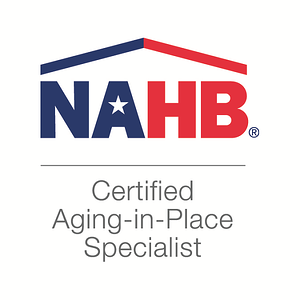
A Custom Roll-In Shower Conversion in Dripping Springs, Texas

Tags:
Texas,
ADA accessible,
aging in place remodeling,
aging in place home modifications,
wheelchair accessible remodeling,
wheelchair accessible baths and kitchens,
aging in place remodels,
aging in place construction,
aging in place designs,
wheelchair accessible baths,
accessible home remodeling,
CAPS remodeling techniques,
Universal Design,,
aging in place services,
aging in place design,,
senior aging in place services,
age in place home design,
what does it mean to age in place,
universal design building for a lifetime,
universal designbuilding for the future,
aging in place home remodeling,
home remodeling for the elderly,
Dripping Springs,
Dripping Springs home accessibility solutions,
Dripping Springs kitchen remodel,
Dripping Springs bathroom remodel,
Dripping Springs TX home modification services,
Dripping Springs home modification services,
Dripping Springs bath remodeling,
Dripping Springs bath remodel
What does CAPS stand for?
First of all, CAPS stands for Certified Aging in Place Specialist. The aging societal changes and inventory of inaccessible existing houses created the need for a CAPS certification program. This designation program, offered through the National Association of Home Builders, NAHB, in collaboration with The American Association of Retired Persons AARP, incorporates components of assessment, technical knowledge, and management skills related to disability home modifications used to help people stay at home safely and independently for a longer time. The program was developed in 2001.
How do I receive a senior home assessment?
Simply contact T-Square Company at www.tsquareco.com or call 512-444-0097 to schedule an appointment and find out what is involved. David L. Traut, CAPS (#1636580), the owner of T-Square Company in Austin, Texas, is one of the select group of professionals nationwide to earn the Certified Aging-In-Place Specialist (CAPS) designation, identifying him as a home remodeler and builder with the skills and knowledge necessary to remodel or modify a home to meet the unique needs of the older population, disabled owners, or their visitors. T-Square Company offers turn-key design/build projects to help with senior living solutions in Dripping Springs.

What can I gain from a certified home assessment?
During a home assessment for increasing accessibility, the structural needs of the client will be noted and documented through sketches, photos, and conversation. All the surroundings will be considered, from the flooring to the layout of a specific room or location as it pertains to the inhabitant's ease of usability. The physical and emotional needs of the occupant will also come into play because of mobility, sensory, or cognitive concerns. The goal is to modify the home in a custom manner to provide for the occupant's maximum health, independence, and safety. Often the input from any caretakers, like a physical or occupational therapist, during the assessment phase can prove invaluable. The three main rooms involved in Aging in Place home modifications are the bathroom, the kitchen, and the family room. These three areas comprise the most occupied spaces of any home and will be connected by a designated accessible route.
What are the five best home modifications for seniors Aging in Place?
Seniors' five basic needs involve installing ramps, access through wider doorways, bathroom renovations, kitchen alterations, and non-slip floor surfaces. Freedom to move about the home without encountering architectural barriers and increased usability is the goal of the process.
What Are The Benefits of Aging in Place?
Reasons for choosing to Age in Place include staying in your existing home surrounded by your neighbors and family and avoiding the prohibitive cost of senior living communities or assisted living. While it may be overwhelming to consider aging in your own home and the costs of the modifications required, many temporary and permanent options can help you stay in your home well past retirement. We all must observe safety for everyone as the baby boomers choose to Age in Place within their homes.

Tags:
barrier free access,
aging in place home modifications,
CAPS certified remodeling in Austin,
aging in place construction,
accessibility home remodeling in Austin,
CAPS professional in Austin,
CAPS certification holder in Austin,
CAPS remodeling techniques,
Universal Design,,
aging in place services,
accessibility designs Austin Texas,
Austin senior living solutions,
age in place home design,
Austin disability contractors for special needs,
accessible homes,
Austin home accessibility solutions,
Austin home modification services,
Age in Place at Home,
Professional Disability Remodeling Contractor
What does CAPS stand for?
First of all, CAPS stands for Certified Aging in Place Specialist. The aging societal changes and inventory of inaccessible existing houses created the need for a CAPS certification program. This designation program, offered through the National Association of Home Builders, NAHB, in collaboration with The American Association of Retired Persons AARP, incorporates components of assessment, technical knowledge, and management skills related to disability home modifications used to help people stay at home safely and independently for a longer time. The program was developed in 2001.
How do I receive a senior home assessment?
Simply contact T-Square Company at www.tsquareco.com or call 512-444-0097 to schedule an appointment and find out what is involved. David L. Traut, CAPS (#1636580), the owner of T-Square Company in Austin, Texas, is one of the select group of professionals nationwide to earn the Certified Aging-In-Place Specialist (CAPS) designation, identifying him as a home remodeler and builder with the skills and knowledge necessary to remodel or modify a home to meet the unique needs of the older population, disabled owners, or their visitors. T-Square Company offers turn-key design/build projects to help with senior living solutions in Austin.
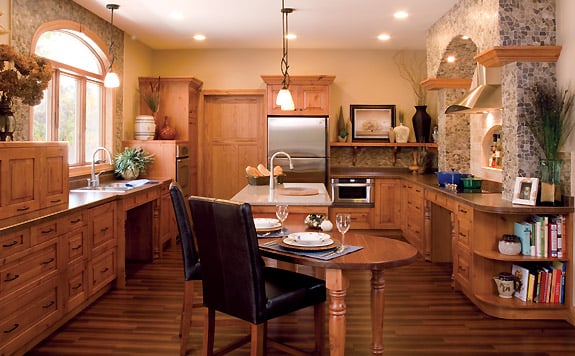
What can I gain from a certified home assessment?
During a home assessment for increasing accessibility, the structural needs of the client will be noted and documented through sketches, photos, and conversation. All the surroundings will be considered, from the flooring to the layout of a specific room or location as it pertains to the inhabitant's ease of usability. The physical and emotional needs of the occupant will also come into play because of mobility, sensory, or cognitive concerns. The goal is to modify the home in a custom manner to provide for the occupant's maximum health, independence, and safety. Often the input from any caretakers like a physical or occupational therapist during the assessment phase can prove invaluable. The three main rooms involved in Aging in Place home modifications are the bathroom, the kitchen, and the family room. These three areas comprise the most occupied spaces of any home and will be connected by a designated accessible route.
What are the five best home modifications for seniors Aging in Place?
Seniors' five basic needs involve installing ramps, access through wider doorways, bathroom renovations, kitchen alterations, and non-slip floor surfaces. Freedom to move about the home without encountering architectural barriers and increased usability is the goal of the process.
What Are The Benefits of Aging in Place?
Reasons for choosing to Age in Place include staying in your existing home surrounded by your neighbors and family and avoiding the prohibitive cost of senior living communities or assisted living. While it may be overwhelming to consider aging in your own home and the costs of the modifications required, many temporary and permanent options can help you stay in your home well past retirement. We all must observe safety for everyone as the baby boomers choose to Age in Place within their homes.

Tags:
barrier free access,
aging in place home modifications,
CAPS certified remodeling in Austin,
aging in place construction,
accessibility home remodeling in Austin,
CAPS professional in Austin,
CAPS certification holder in Austin,
CAPS remodeling techniques,
Universal Design,,
aging in place services,
accessibility designs Austin Texas,
Austin senior living solutions,
age in place home design,
Austin disability contractors for special needs,
accessible homes,
Austin home accessibility solutions,
Austin home modification services,
Age in Place at Home,
Professional Disability Remodeling Contractor
The number one safety hazard for elderly or disabled people of any age is negotiating level changes both outside and within the home--steps at the entry, stairs between floors, curbs to step over when entering the bath or shower, and being able to access patios, decks, and terraces. When Universal Design is correctly incorporated into a home’s layout, these flexible houses accommodate the needs of their owners and their visitors even as those needs evolve over time. Barrier free homes are functional and comfortable as well as accessible to everyone.
Visitability or the lack thereof begins at the curb for every home. This term refers to how easy it is for all people coming by to pay a visit or stay with the homeowner regardless of their physical abilities. Occupants and visitors are capable of entering an accessible bathroom located on the same floor representing the visitability of the home. Ideally, the entry into the house is through a 36 inch wide door having an ADA threshold to create a no step entry. Entrance is obtained using an easily graspable lever style lock.
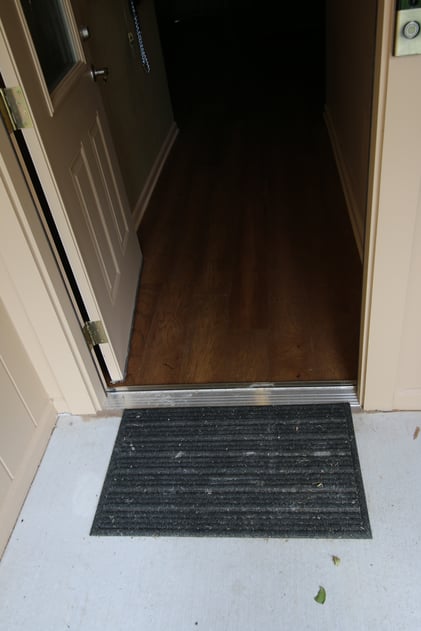
The accessible entrance is a great place to begin an accessible route for most homes. Once inside the structure a new set of problems concerning accessibility are discovered along the extended accessible route if the entire first floor is not on one single level. The designated accessible route continues into all of the most used rooms increasing accessibility. All swinging doors are minimally 36 inches wide using Universal Design along the accessible route producing a clear 32 inch wide opening when the door is opened to ninety degrees. Sliding, pocket, and bi-fold doors require less operating approach space because the door is better contained along the wall in which it is mounted.
With increasing age or following a temporary health setback, simply maneuvering around inside the home is increasingly more difficult. This designated route includes a 5 x 5 foot clear turning space required for wheelchairs in the main living area, kitchen, the bedroom, and one bathroom. The selection, placement, and design of doors and doorways influence a wide range of people. The location of the doorways affects furniture placement and usable space within the associated room. This in turn affects the clear floor space and usability of the living environment for someone confined to a wheelchair utilizing the accessible route.

Tags:
barrier free access,
aging in place remodeling,
aging in place,
aging in place home improvements in Austin,
aging in place remodels,
accessible home remodeling,
Universal Design,,
home modifications for independent living,
aging in place specialist,
aging in place services,
aging in place design,,
certified aging in place specialist,
handicap remodeling contractors in Austin,
disability home modifications in Austin,
handicap accessibility,
accessibility remodelers in Austin,
home modifications for independent living Austin,
disability remodeling in Austin,
Austin Handicap Remodeling,
universal design/build,
universal design ideas,
Austin Accessibility Design,
Austin accessible home remodeling,
certified aging in place consultant in Austin,
aging in place specialist in Austin,
aging in place design in Austin,
age in place home design,
what does it mean to age in place,
what is universal design,
aging in place home remodeling,
home accessibility help in Austin,
home remodeling for disabled in Austin Texas,
wheelchair accessible home remodeling in Austin,
universal design remodeling techniques,
universal design remodeling contractor,
universal design building contractor,
universal design principles,
applying principles of universal design in Austin,
disability contractor in Austin,
disability and special needs contractor Austin,
Austin disability contractors for special needs,
handicap accessible remodeling,
barrier free remodeling,
handicap remodeling,
disability remodeling,
disability access contractor,
home access,
universal design vs. aging in place,
universal design contractor,
home accessibility,
accessible design,
why universal design,
what is universal design in Austin,
wheelchair accessible housing,
handicap accessible housing,
accessible homes in austin,
universal design techniques,
accessibility home modifications,
accessible home modifications,
modifying your home for a disabled child,
handicap accessible floor plans,
accessible home builder in Austin,
wheelchair accessible homes,
special needs contractor,
universal home design in Austin,
home renovations for disability in Austin,
disability remodeling contractor in Austin,
disability renovation services in Austin Texas,
the basics of aging in place,
how the life cycle affects aging in place,
aging in place versus universal design,
maneuvering in and around the accessible home





























